July 24, 2024 at 09:00AM
Prior 52.8
Manufacturing PMI 45.6 vs 46.1 expected
Prior 45.8
Composite PMI 50.1 vs 51.1 expected
Prior 50.9
The growth in the Eurozone economy has stalled in July, with services activity growing at a slower pace and manufacturing conditions continuing to dawdle. The former reading is a 4-month lower while the latter reading is a 7-month low. That suggests weaker economic sentiment in the euro area to kick start the second half of the year.
On the inflation front, input prices rose sharply to a 3-month high while output prices also increased but at a slightly softer pace. Meanwhile, cost prices continued to tick higher with selling prices also increasing particularly in the services sector. HCOB notes that:
“Is this the summer lull? It feels a bit like it as the Eurozone economy barely moved in July, according to the HCOB Flash
Eurozone PMI. But beside the fact that we are talking about seasonally adjusted figures, looking at the two monitored
sectors the situation deteriorated significantly in the manufacturing sector and counteracted moderate growth in the services
sector. According to our GDP Nowcast, growth in the third quarter is still on the cards, however.
“It’s unsettling how steadily companies in the manufacturing sector are slashing jobs month by month. The pace has barely
changed over the last ten months. As employment has broadly fallen at a slower rate than output, this hints at two things:
companies are a bit cautious about trimming staff as there may still be some hope for better times. And secondly, labour
productivity is diminishing which bodes ill for growth perspectives. As a result, an eventual recovery will likely be followed by
a rather large lag in employment growth.
“While Germany is seemingly struggling to grow, the French economy is being fueled by the Olympic Games. According to
anecdotal evidence, French service providers increased their business activity in July due to the preparation for the Olympic
Games. In contrast, demand in the German manufacturing sector seems to have dragged down overall private sector output.
“If only growth was considered, you find a strong argument for a rate cut in September by the ECB. However, prices data did
not provide hoped for relief. Input prices in the services sector increased at a faster rate and selling prices rose at a similar
pace to the previous survey period. To make things worse, input prices in manufacturing, which fell for more than a year
between March 2023 and May 2024, have now increased for two months straight. Output prices fell only fractionally, which
may make it more difficult for overall inflation to make the necessary progress towards the 2 percent target. Our conclusion
is that while a September rate cut will most probably be exercised, it will be much trickier to follow this path in the months
thereafter, unless the downturn morphs into a deep recession.”
This article was written by Justin Low at www.forexlive.com.


